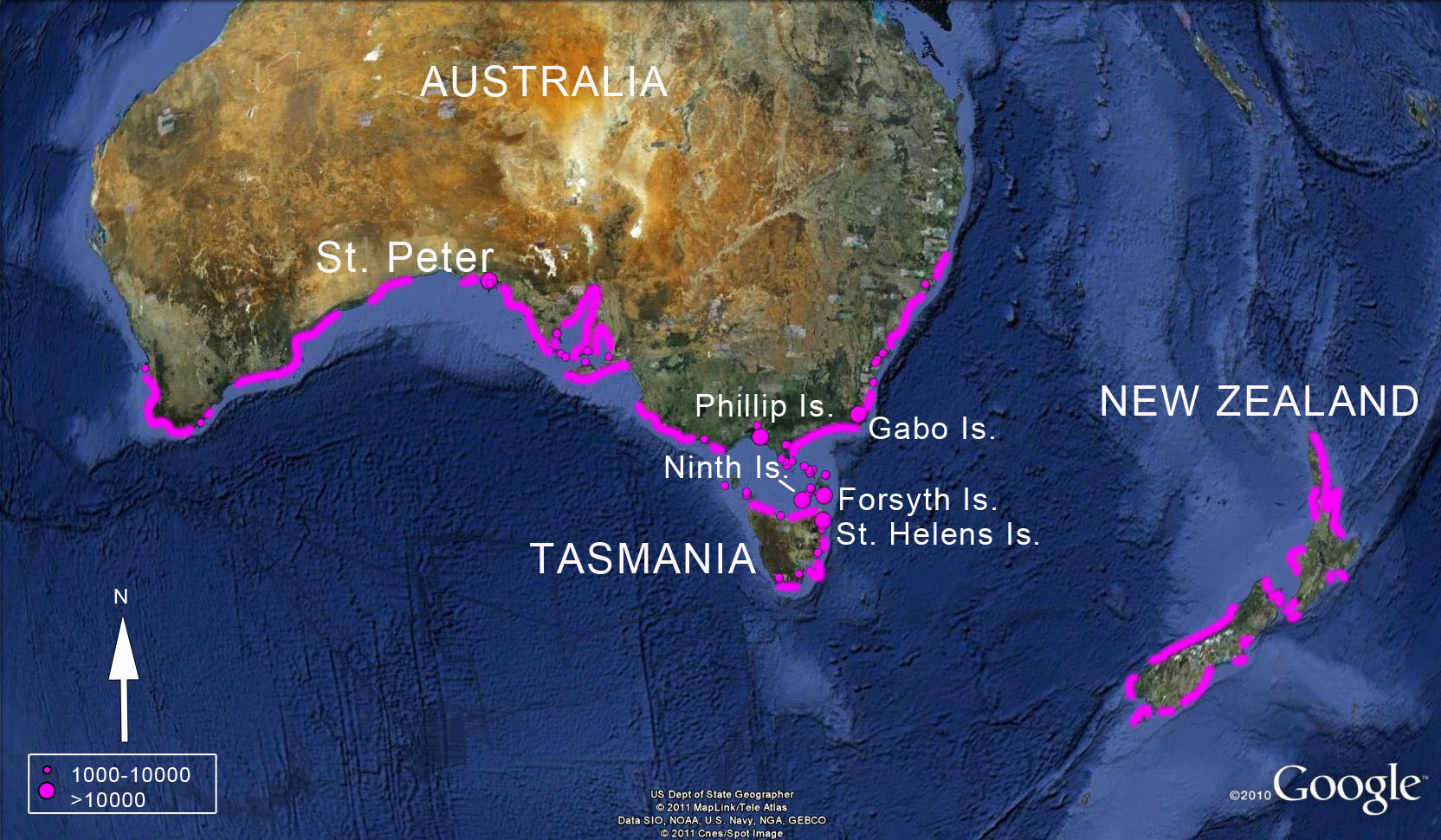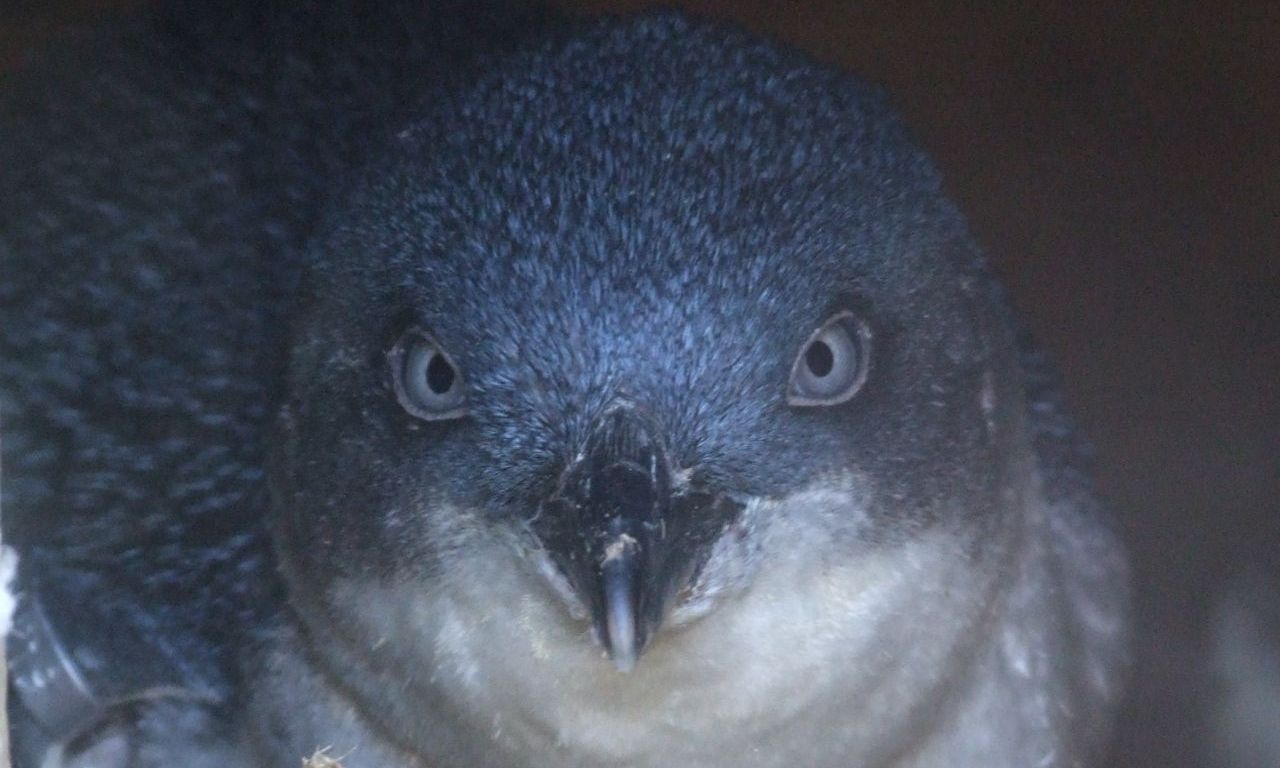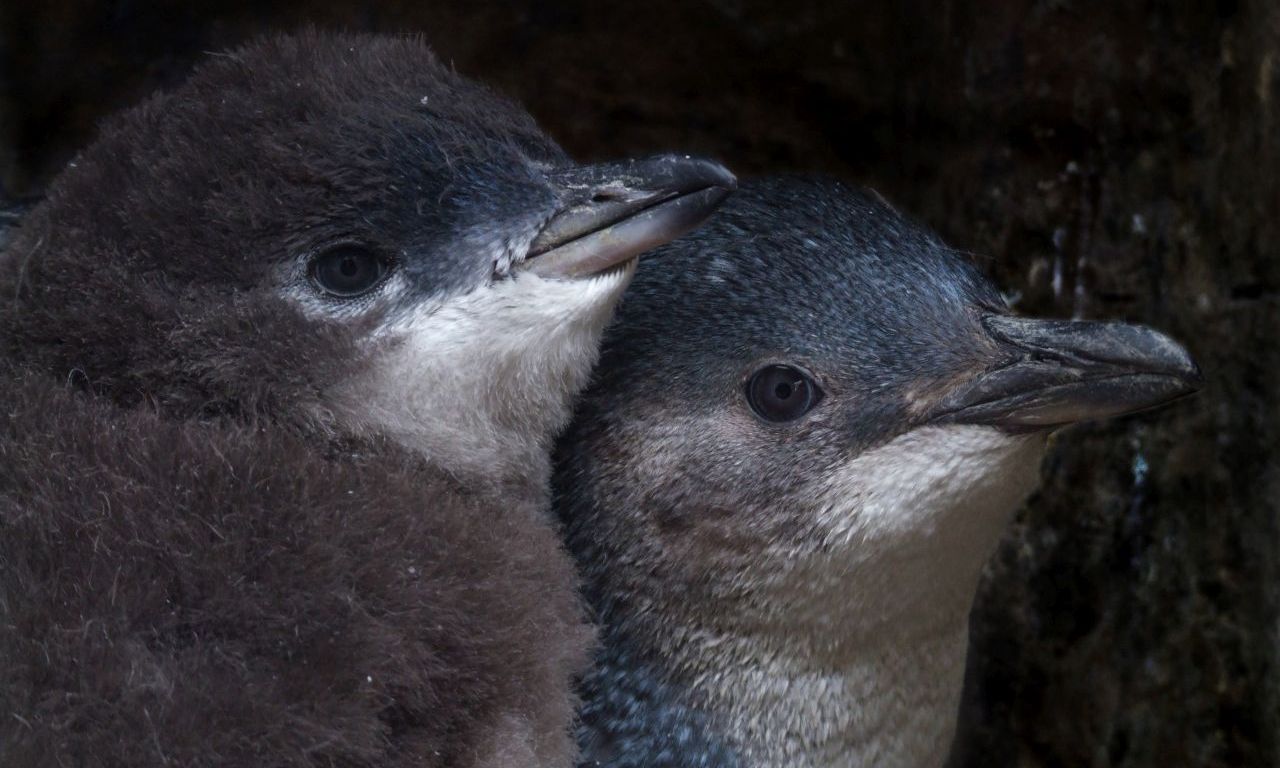Little (Australia) or Blue (New Zealand) Penguin - Eudyptula minor
- DESCRIPTION
- Smallest of extant species (approximately 33cm, 1-1,2 Kg), white below and blue above, feet pinkish white, neotenous plumage lacks conspicuous coloration or head markings, dark bill. Male usually slightly larger and heavier, bill more hooked. Plumage wears to a duller bluish-grey towards moult. Juveniles distinguished by smaller bill and fresher plumage.
- DISTRIBUTION
-
Entire coastline of New Zealand, the Chatham Islands, Tasmania, and southern
Australia.

- HABITAT
- Offshore islands or, less commonly, parts of mainland coasts (often talus at the base of cliffs), inaccessible to mammalian predators. Most breeding sites are adjacent to the sea with burrows in sand or soil or under vegetation, sometimes in caves or crevices in rock falls. Few sites in urban areas and some on anthropogenic structures. Vegetation in the breeding areas varies from sparsely-vegetated caves and rock screes through grass and scrublands, to woodland and forest.
- BREEDING BIOLOGY
- Egg-laying between August-December at Phillip Island, Victoria, between April-December at Penguin Island, Western Australia. Both parents alternate incubating two eggs. The chicks hatch after 35 days and both parents share their feeding. During the guard stage, the parents brood chicks alternately and when chicks are about two weeks old both parents go to sea 1-2 days. Fledging at 7-9 weeks. First breeding at 2 or 3 years old although breeding at less than 16 months of age has been reported.
- FEEDING
- Diet varies significantly between colonies and between years at the same colony. They feed mainly on clupeids such as anchovy Engraulis sp and pilchards Sardinops sagax when feeding chicks but may also consume krill Nyctiphanes australis and several species of cephalopods during breeding.
- REPRODUCTIVE POPULATION
- 300,000 pairs.
- Conservation status (IUCN) and threats
- “Least concern” (IUCN Red List 2018), due to this species is numerous and widespread across southern Australia and New Zealand. Main threats vary between colonies, including climate variation, presumed egg and chick collection, potential competition and incidental capture in fisheries, habitat degradation, introduced mammalian predators, oil pollution.
- SOURCE
- Dann, P. 2013. Little (Australia) or Blue (New Zealand) Penguin (Eudyptula minor). In PENGUINS: NATURAL HISTORY AND CONSERVATION (García Borboroglu, P.G. and Boersma, P.D. eds.) UW Press, Seattle U.S.A. 328 pp.


